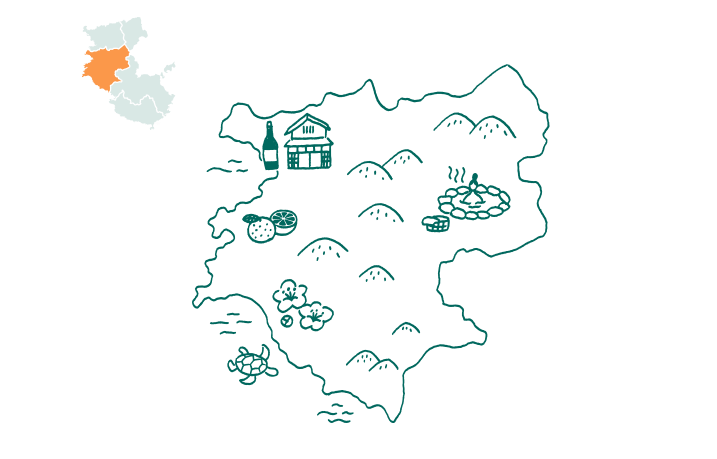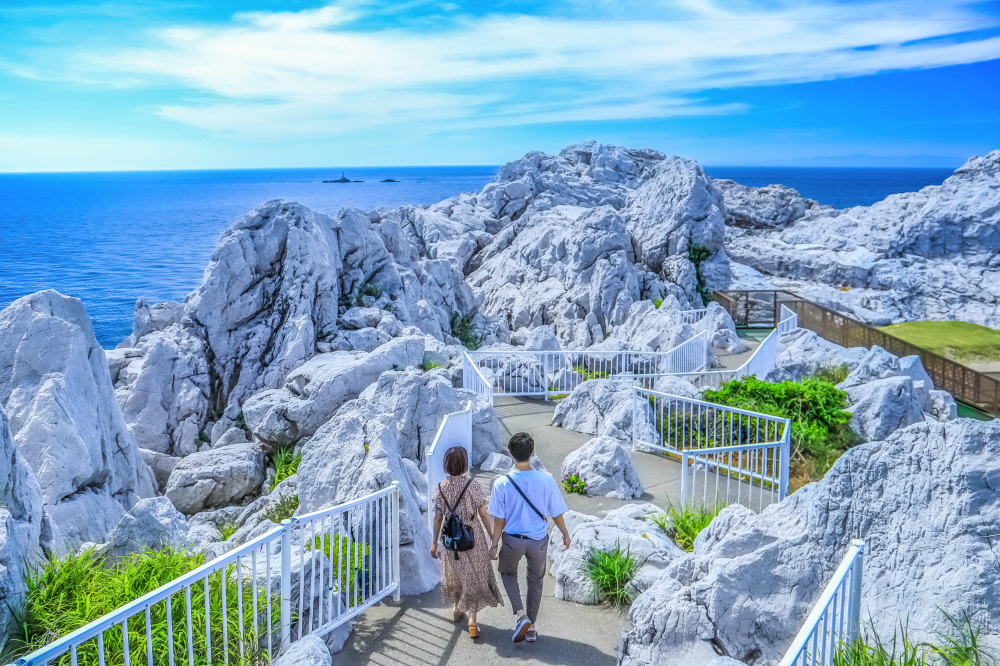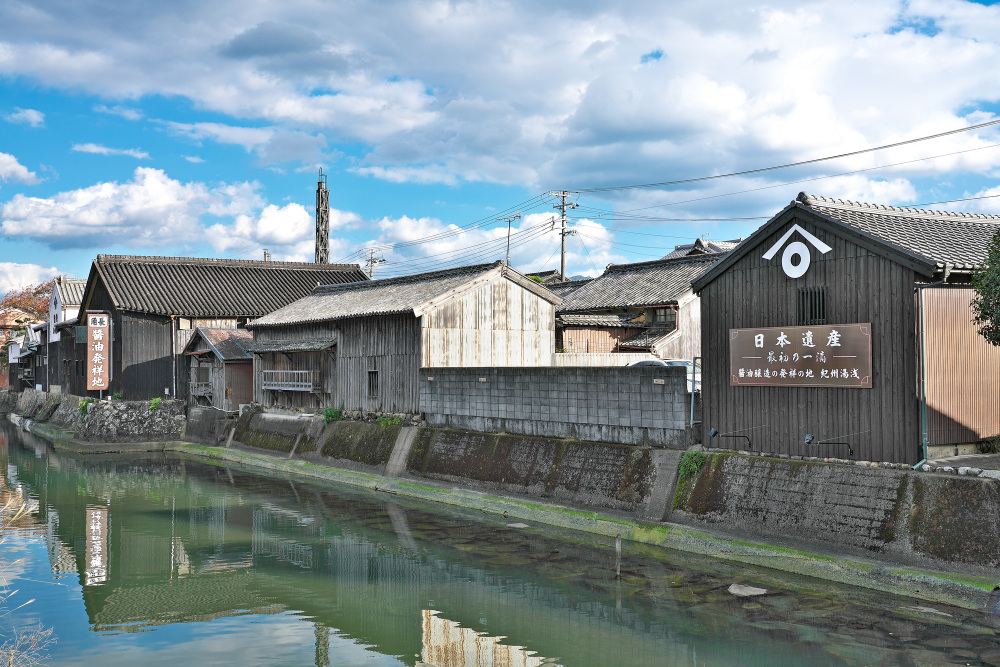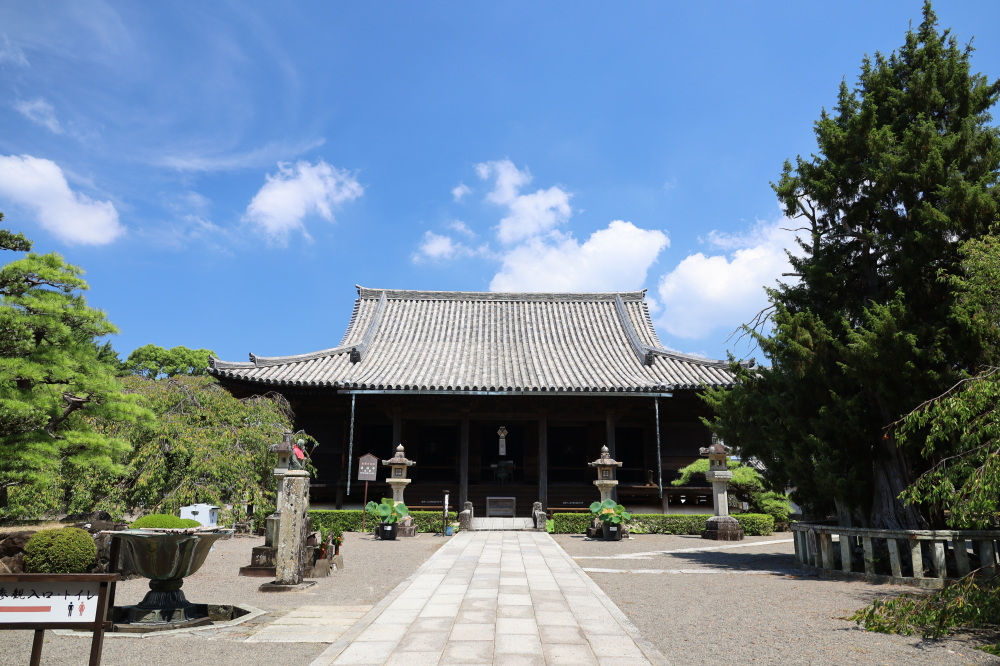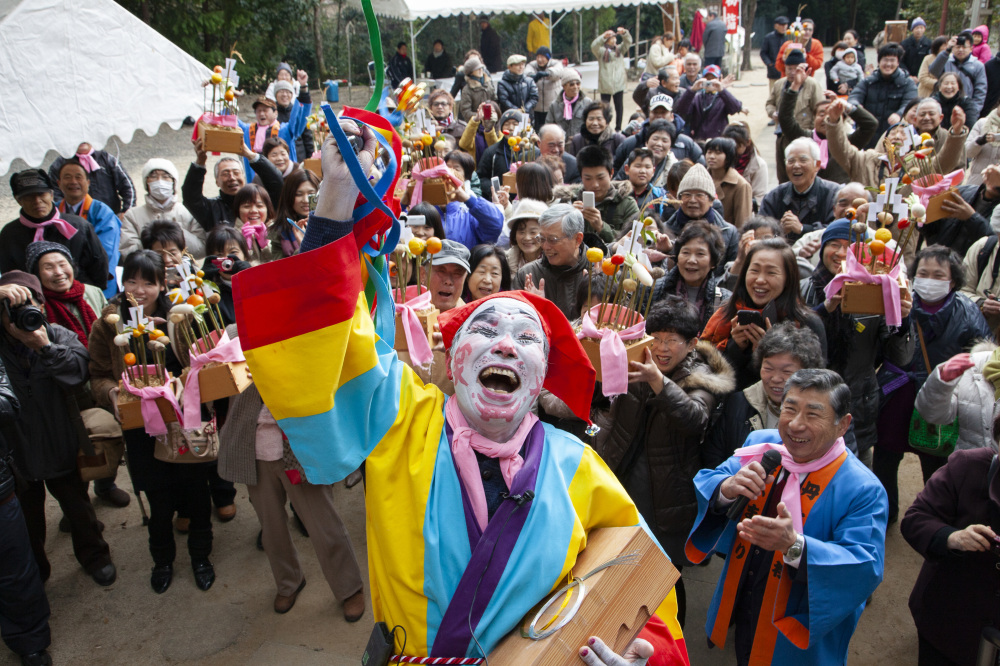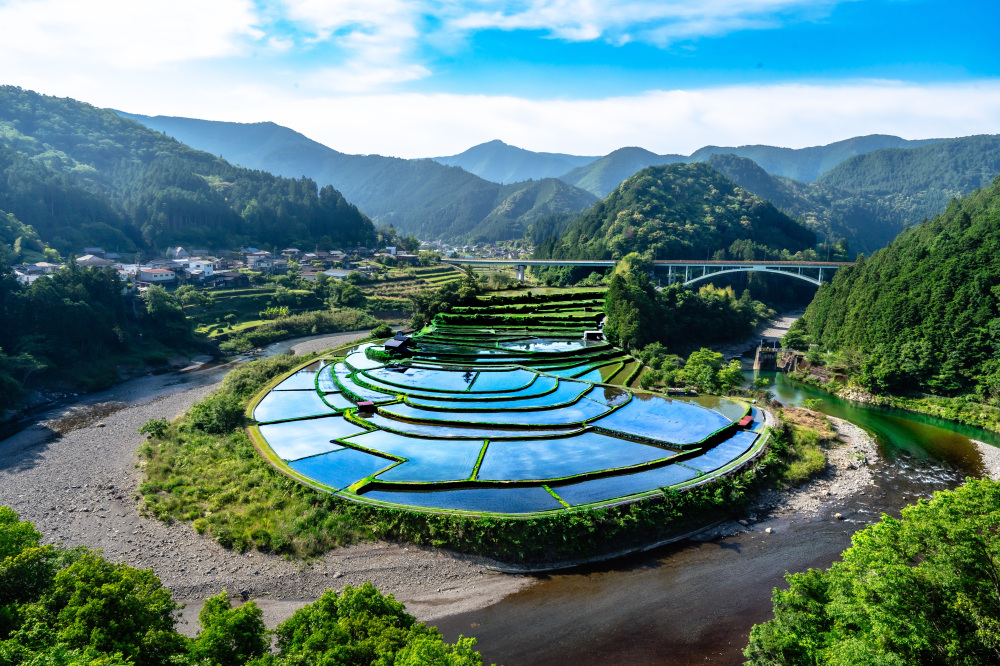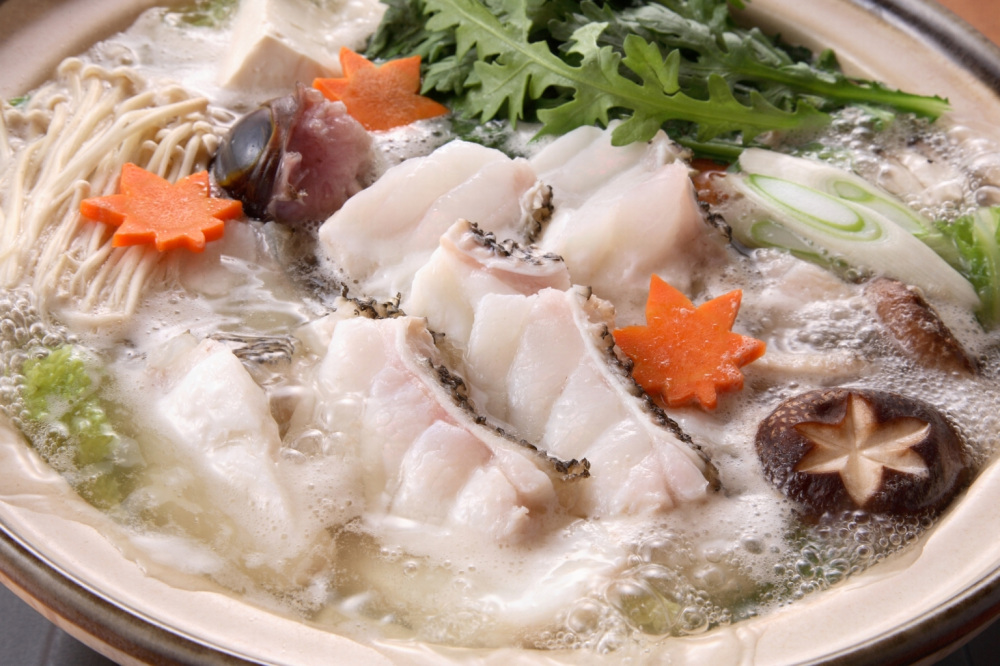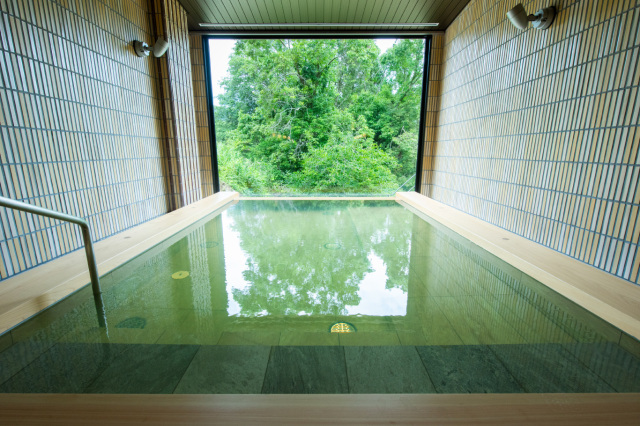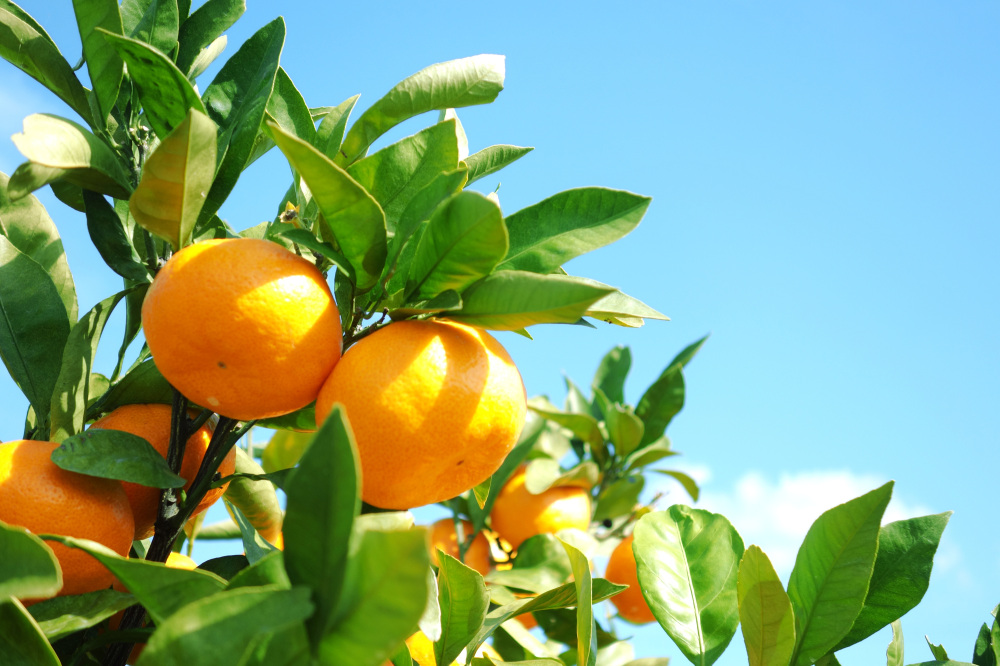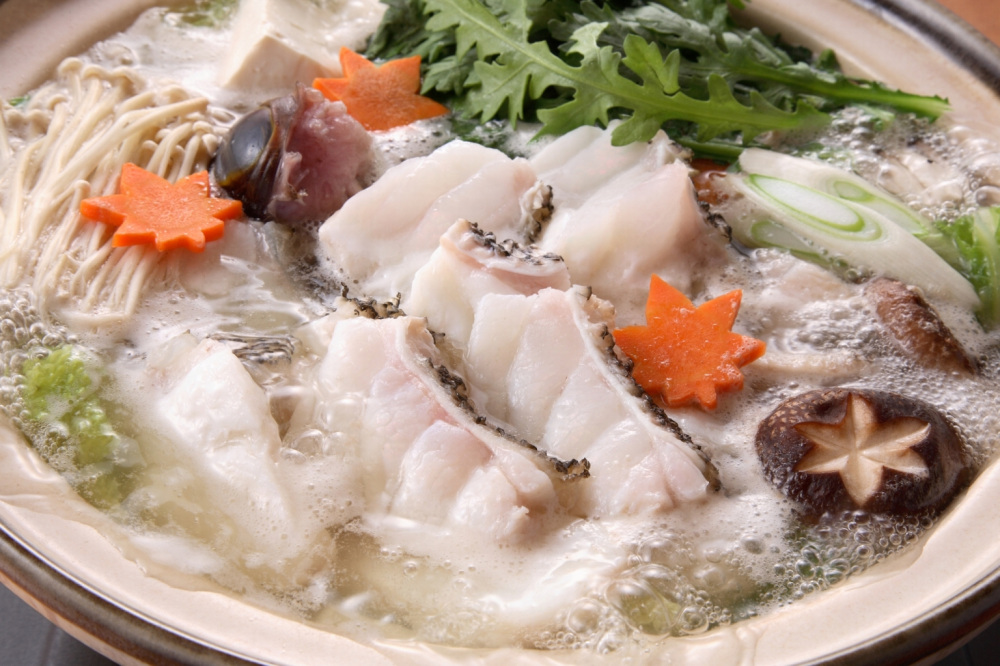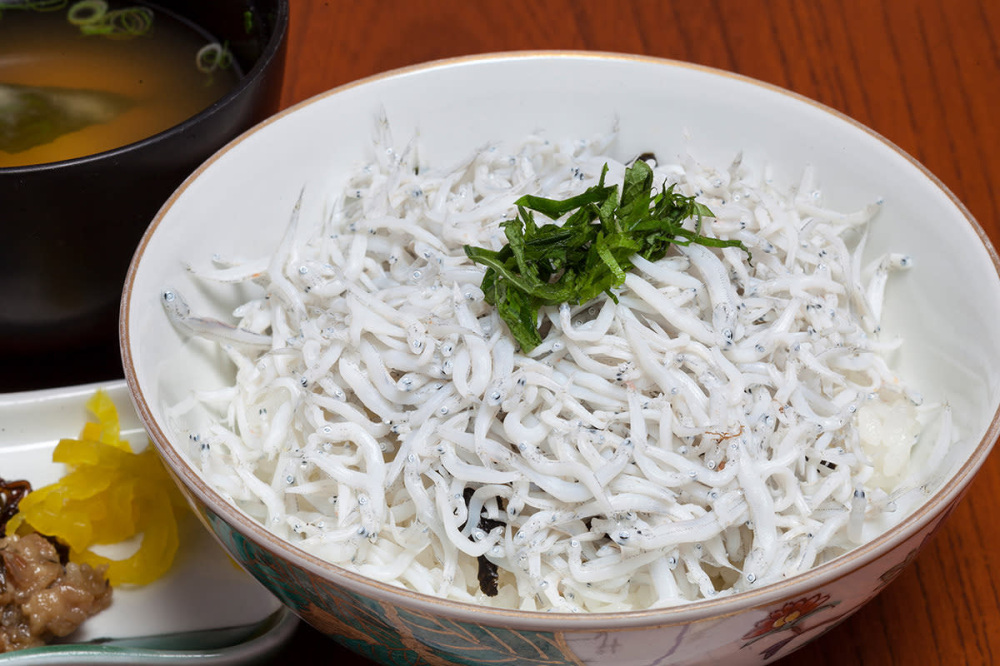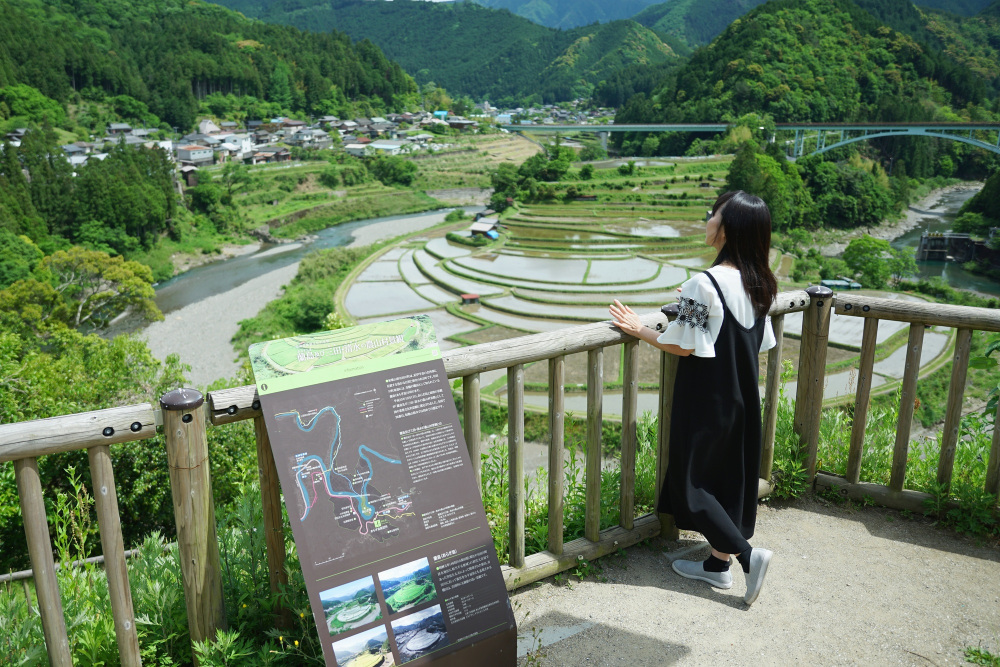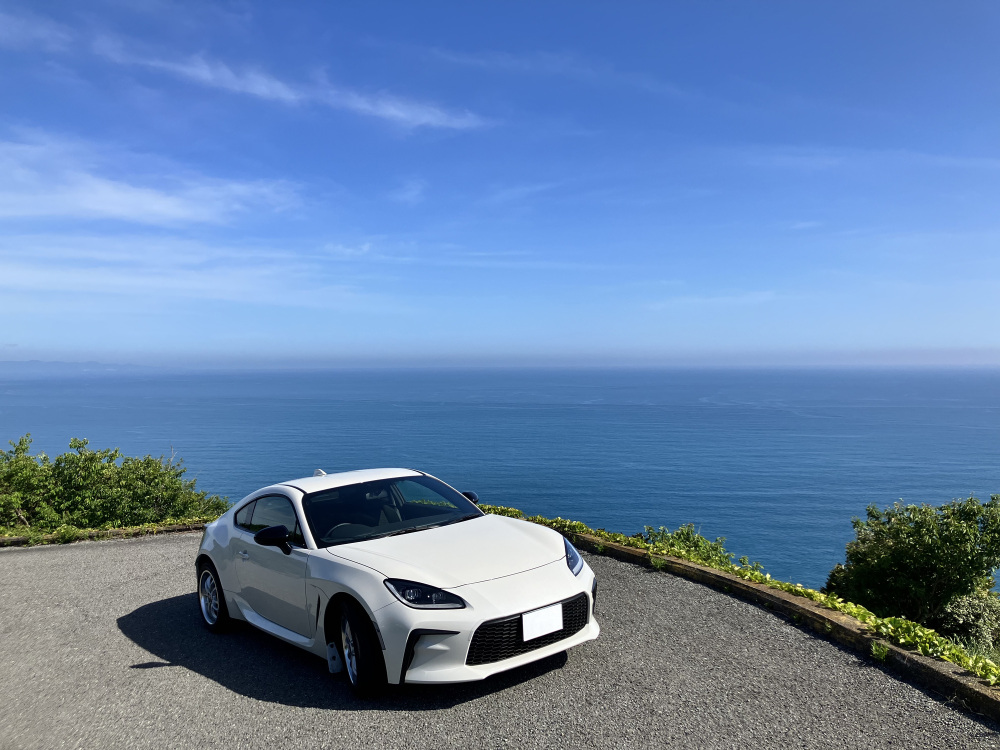Arida mandarin oranges and Hidaka kue (longtooth grouper), historical towns and bountiful nature - all the highlights of the Arida-Hidaka area
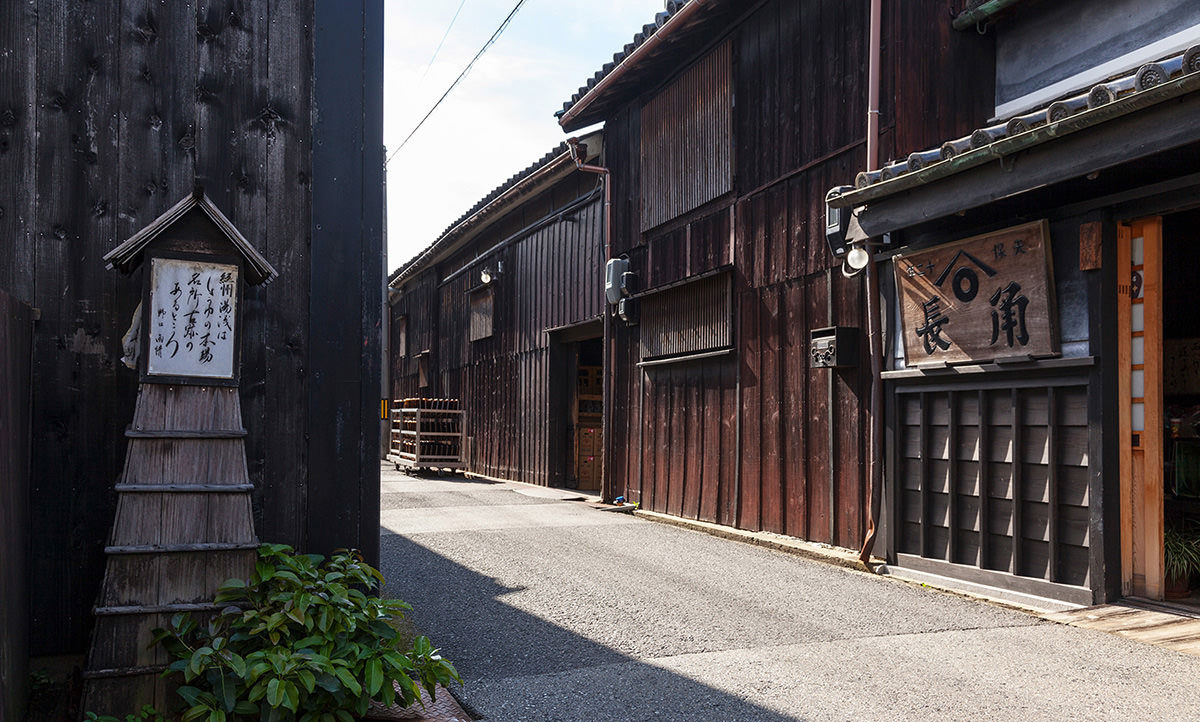
The Arida-Hidaka area is full of treasures for visitors, blessed by mountains, ocean and historical towns. Here we are pleased to present the tourism, events, experiences and foodie delights of the region.
What sort of place is the Arida-Hidaka area?
Arida-Hidaka is a district with an indented coastline offering stunning views, and mountains and deep valleys inland.
Given the abundance of locations of great natural beauty, as well as traditional shrines and temples, and quaint towns and villages, the area can easily be enjoyed on foot. There are also plenty of delicacies unique to the Wakayama soils and climate such as Arida mandarin oranges and Nanko-ume plums, Yuasa soy sauce, Kinzanji miso and the kue (longtooth grouper), known as the "phantom fish".
What are the popular tourist spots?
First up, the most popular tourist sights. The coast road on a fine day is obvious, but there are sights everywhere, like Aragi Island and Yahoo Point up in the mountains. Another must-see is the town of Yuasa, the birthplace of Japanese soy sauce.
- Aragi-jima Island Rice Terraces
- Aragi-jima Island is a unique sight designated as one of the top 100 rice terrace views in Japan. In 2013, it was also awarded n…
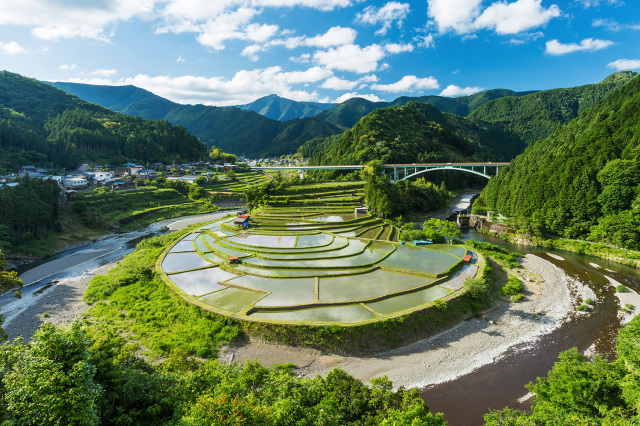
- View more
- Yuasa historic townscape
- Yuasa is renowned as the birthplace of Japanese soy sauce, an essential of Japan's culinary culture. Breweries continue to make soy sauce using the traditional method, so you may encounter the aroma of soy sauce as you stroll the streets. Traditional houses and storehouses related to brewing link early times and the present day.
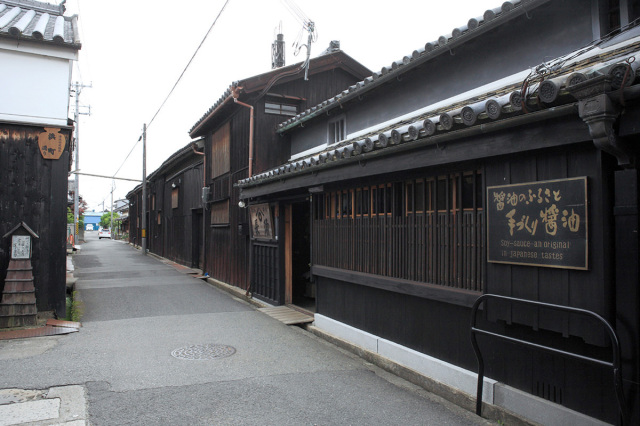
- Yuasa Town official website
- Shirasaki Coast
- This mysterious and picturesque location features scenery of massive white limestone along the coast and is designated as one of…
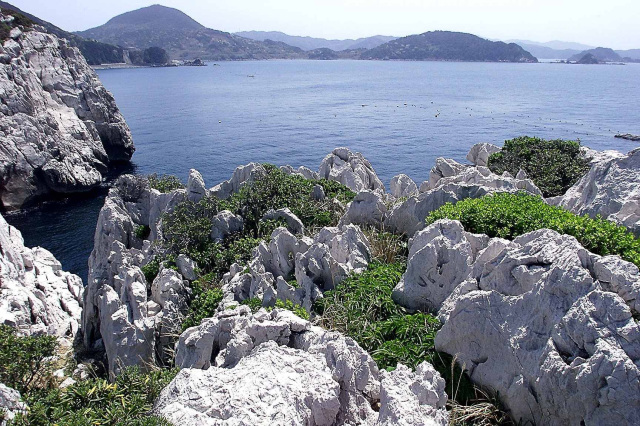
- View more
- Cape Hinomisaki and Hinomisaki Lighthouse
- Cape Hinomisaki, the westernmost point of the Kii Peninsula, offers superb views across to Shikoku and Awaji Island. The Hinomisaki Lighthouse, a beautiful 17m-tall structure, stands at the end of the point to guard the Kii Channel. This is also a famous place to view cherry blossoms in the spring, with around 2,000 trees that contrast with the color of the sea.
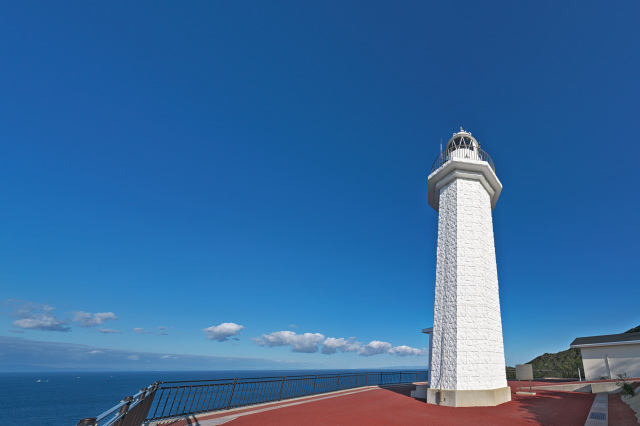
- You Tube
- Kaeru (Frog) Bridge
- An unmissable sight, this bridge spans the road right outside JR Inami Station. The frog is a symbol of the town, with many locations and events featuring frogs such as the Kaeru no Minato tourist information center and the Inami Frog Festival.
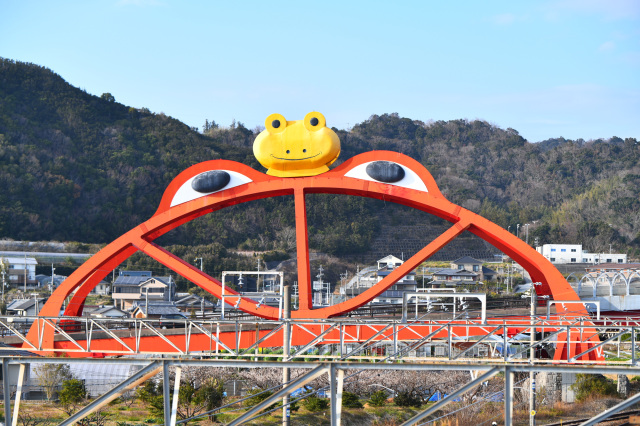
- Inami Town official website
- Kishu Railway
- The shortest local railway in Japan at 2.7 km in total. Trains travel at a leisurely 20 km/h, so you can enjoy a relaxing rail journey. The special tickets sold at Gakumon Station, a stop along the line, are a popular good luck charm for those taking exams.
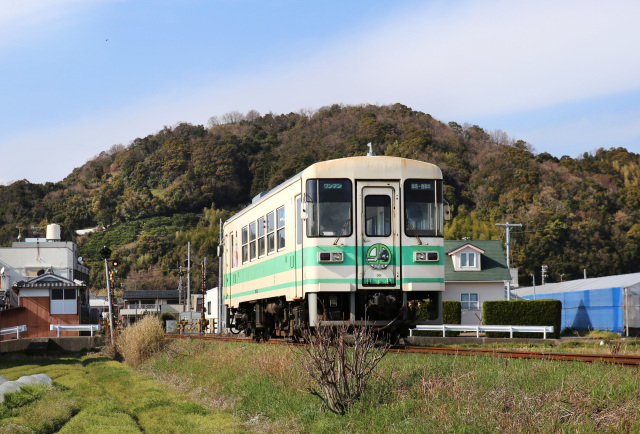
- Kishu Railway
- Yahoo Point
- Yahoo Point is at the lakeside of Tsubayama Dam. Yell and the echo will reverberate back. It is famous as Japan’s number one echo spot. Why not take a load off your chest and cry out something you can’t usually talk about, or make a request of the universe?
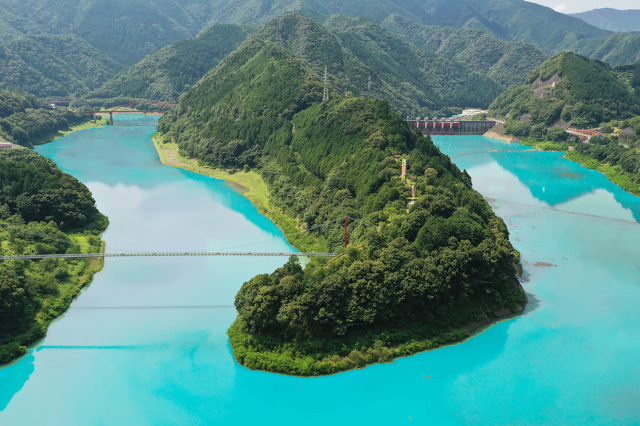
- Hidakagawa Town Tourism Association
- Totsui Limestone Cave
- An amazing limestone cave formed over 250 million years ago. Although not too big at around 100 m deep, it offers close-up views of stalactites and stalagmites on an easy underground walk. The temperature sits at around 15 degrees all year round, so it is a hidden gem for cooling off in the heat of summer.
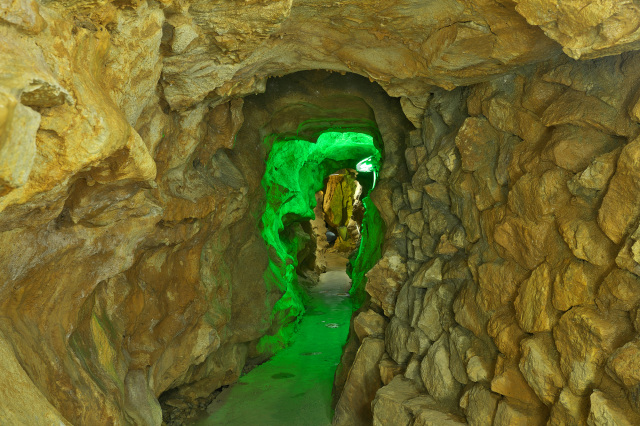
- Yura Town Tourism Association official website
- Jinai-machi
- Jinai-machi is the temple town of Gobo City and developed around the Honganji Hidaka Betsuin temple (also known as Hidaka Goboso). During the Edo period from the early 17th century to the late 19th century it flourished with merchants selling specialties from all parts of the region lining the streets. Today, the area is filled with a historical atmosphere and perfect for a stroll, with old houses that still retain their original appearance and a streetscape unchanged from the late 19th or 20th century.
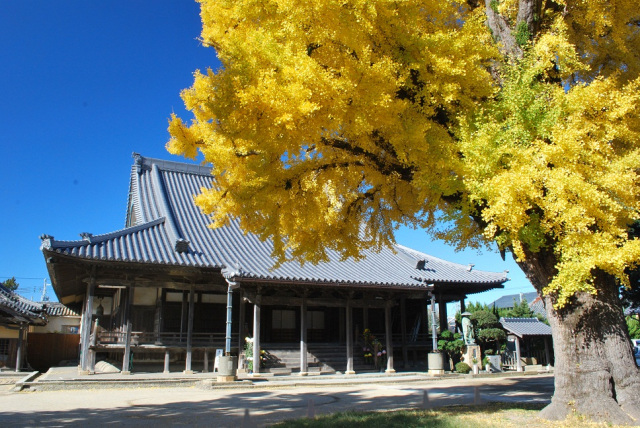
- Gobo City official website
- Zao Bridge
- Zao Bridge is a 160-meter-long suspension bridge. The walking surface is made of latticed steel, so you can see straight down to the waters of the Futagawa Dam. Some visitors find their legs start to shake and are unable to cross the bridge. This is also a fabulous place for cherry blossom viewing in spring, as the banks of the Futagawa Dam are lined with about 1,000 cherry trees.
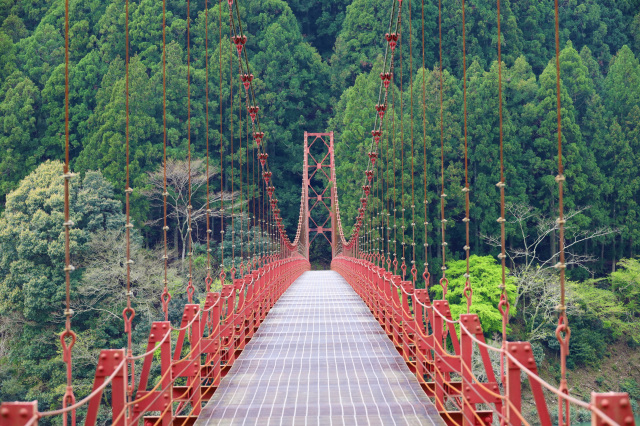
- Aridagawa Town official website
- Poppo-michi Road
- Poppo-michi Road is a 5.2 km walking and cycling path built along a former railway line decommissioned at the end of 2002. Along each side are bucolic views of mandarin orange orchards. It runs from JR Fujinami Station at the west end to Aridagawa Railway Park at the east end. Photo spots line the path, including cafes and station buildings painted with illustrations from children’s books – perfect for your social media feed! You can rent a bicycle from the tourist information center at JR Fujinami Station – cycling the path is recommended too.
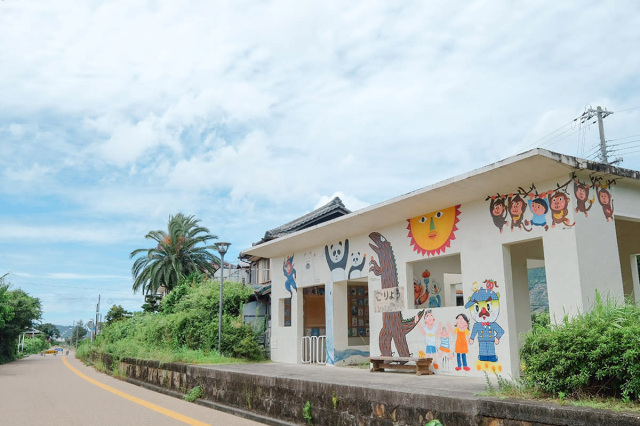
- Aridagawa Town official website
- Nishihiro Coast
- The sea off Nishihiro Beach is quite shallow, making it ideal for families with young children. It is just a short walk from Hirokawa Beach Station.
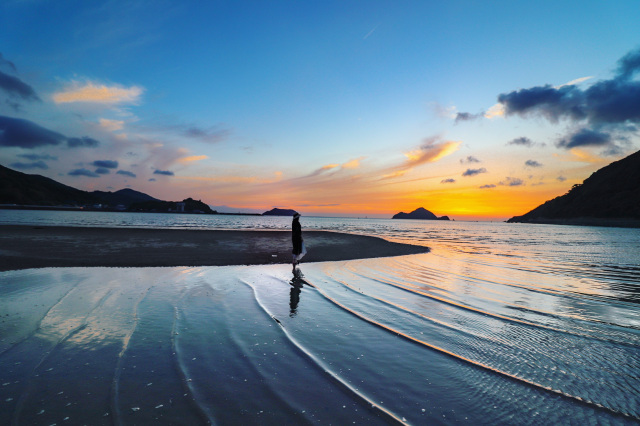
- View more
Column
All of the sights of Aridagawa in one place, from Aragi Island to the Oishi Plateau
Aridagawa Town in Wakayama Prefecture will fully immerse you in nature. Whether it is the beautiful view of terraced rice paddies in Aragi Island or the sweeping panoramas of the Oishi Plateau, there is a lot to see! And you can enjoy great food with the views, from Arida mandarin oranges and river fish to high-end dishes featuring wild foraged produce. This guide gives a thorough introduction to the can't-miss scenic spots, delicious local dishes, and best ways to enjoy your time in Aridagawa. Let our pristine natural surroundings soothe and refresh your body and soul!
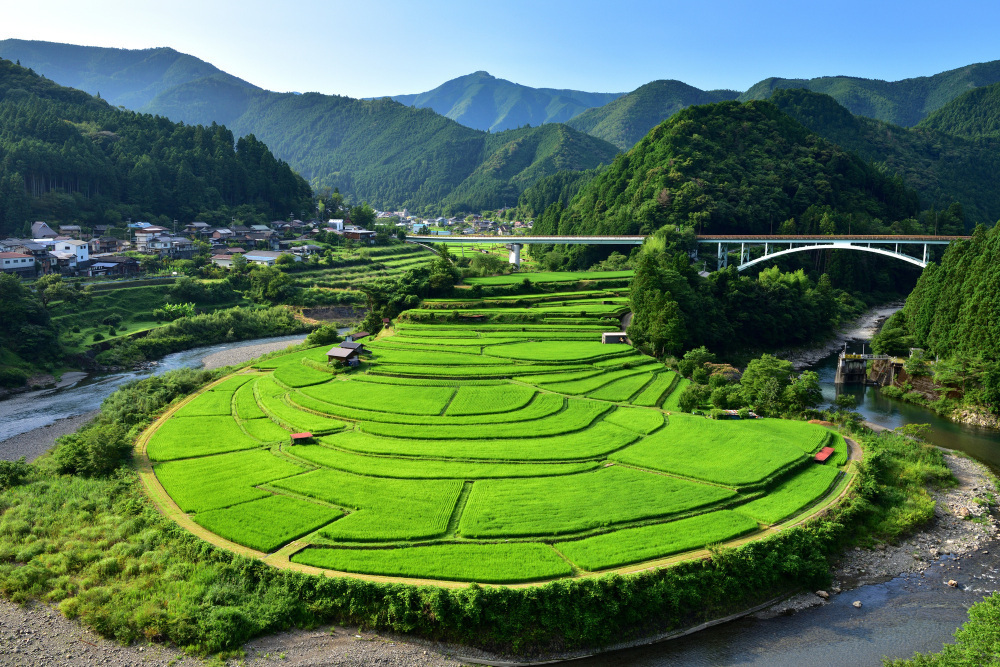
What are the cherished traditional festivals and seasonal events visitors can enjoy?
Given the deep history of the region, there are plenty of festivals that have been celebrated across the centuries. Why not join in and experience the local tradition in person?
There is also the Gyogyotto Fish Festival where people queue up for the grilled mackerel, as well as multiple seasonal events in places such as the enormous Minabe-bairin Ume Orchard Grove.
- Kenkoku Shrine Autumn Festival
- This festival is held on a Sunday in the middle of October every year. Lion dancers, horses and mikoshi floats parade through the old streets of Yuasa. Known as the “Yuasa matsuri” or “Omiya-san no omatsuri” locally, it is customary here to eat narezushi during the festival, which is fermented mackerel sushi wrapped in giant reed leaves.
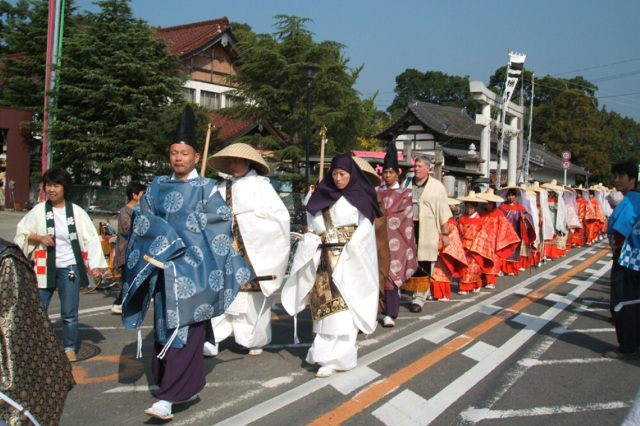
- View more
- Kibun Festival
- Held in summer, this Arida City community event features stage performances and fireworks.
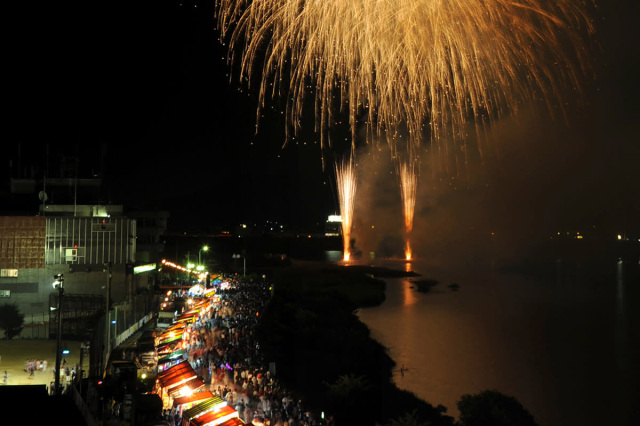
- View more
- Gyogyotto Fish Festival
- This is a gourmet fair held in late October where you can sample fresh seafood caught in Yuasa Bay. In particular, the mackerel grilled over charcoal right in front of you is exquisite. It is so popular that queues form. In addition to sampling local specialties, you can also experience a cruise around Yuasa Bay on a fishing boat, so make the most of it!
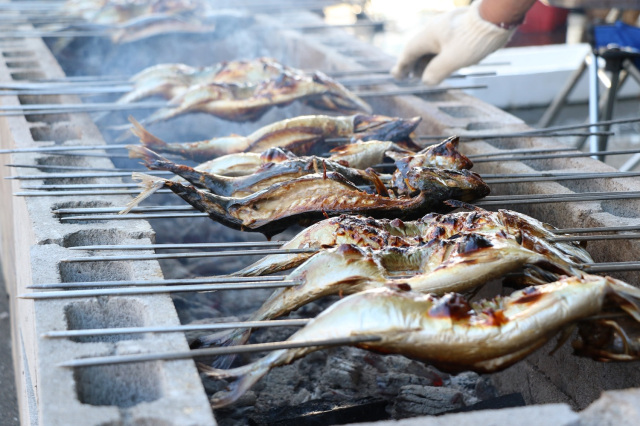
- View more
- Hirohachimangu Shrine Festival (autumn)
- This is a traditional festival where the “Hirokawa Hachimangu Shrine dengaku (a dance enacting the rice growing process)" and the "Otonda Lion Dance" are performed for the gods on October 1st every year. In particular, the dengaku "Shippara Odori", which is designated as an intangible folk cultural property by Wakayama Prefecture, is said to have originated in the Muromachi period around the 14th and 16th centuries. Hirohachimangu Shrine also has a special place in the hearts of locals, as it provided shelter to villagers evacuating from the tsunami following the Great Ansei Earthquake of 1854.
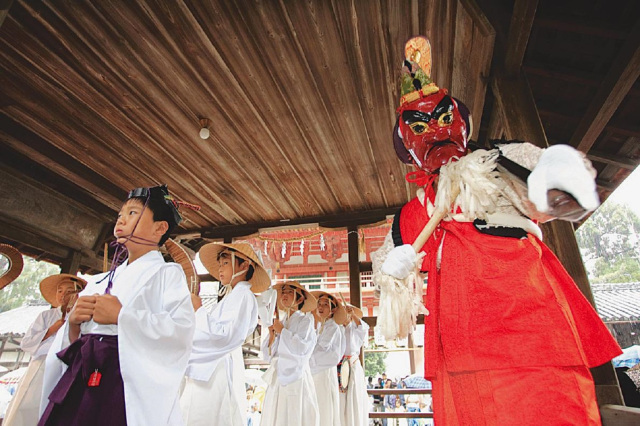
- Hirohachimangu Shrine official website
- The Inamura Fire Festival
- This is a festival held around mid-October to commemorate the good deed of Goryo Hamaguchi, who set fire to rice straw to raise the alarm for villagers to evacuate from the tsunami, and to create awareness of disaster prevention. A taimatsu torch procession makes its way from Inamura-no-hi Square at the Hirogawa Town Office to Hirohachimangu Shrine, where the tsunami evacuees assembled. You too can join the procession by making an advance reservation. Why not walk with us in the parade?
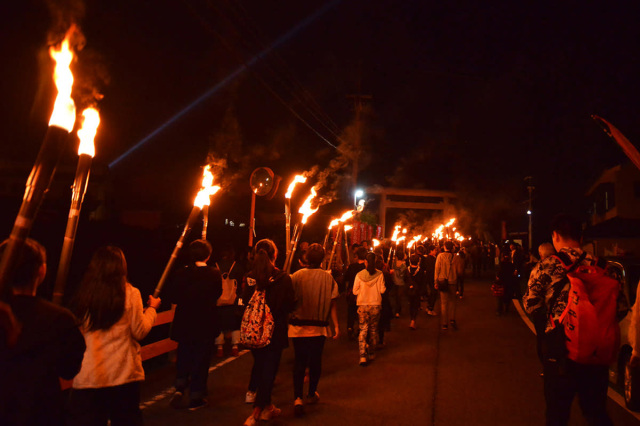
- Hirohachimangu Shrine official website
- Nyu Shrine Laughter Festival
- The famously quirky Nyu Matsuri is attended by throngs of tourists. The sight of the Suzu Furi (bell ringers) and 12 square sake vessel holders, faces painted white and shouting “warae, warae” (laugh, laugh) as they throw lollies brings a smile to the face…this enjoyable, laugh-filled festival is held every October.
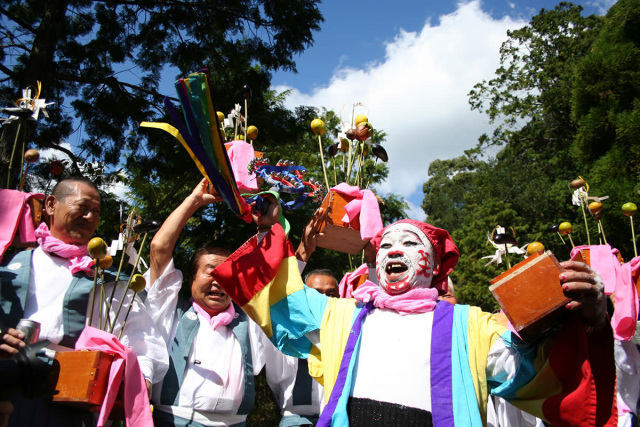
- View more
- Minabe-bairin Ume Orchard Grove
- The biggest plum orchard in Japan opens its gates every year in early February. The trail around the grove takes about 1 hour 20 minutes to stroll, the scent of plum blossoms in the air. Pets are welcome too. This is a place to enjoy with others, be it your family or your special someone. A range of events is held during the plum grove open season.
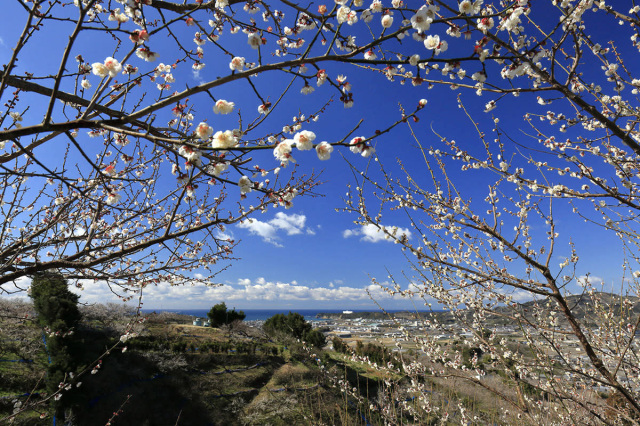
- Plum Viewing Association official website
- Fujidana (Wisteria Trellis) Road
- Wisteria Trellis Road, inside the Miyama-no-Sato Forest Park Refresh Area, is the longest in Japan at 1646m! Walking through the wisteria tunnel when it blooms in late April-early May, the gentle scent is a balm for the soul. From the observation deck, gaze out across the Wisteria Trellis Road to Tsubayama Dam. This is the place for sensational views and takes around an hour to complete the loop walk.
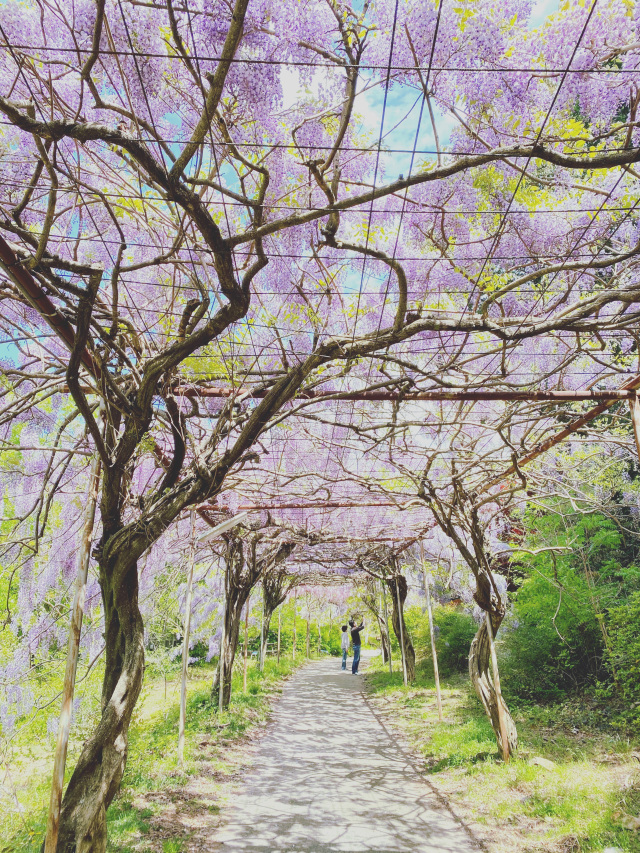
- View more
To truly appreciate our nature and tradition, get involved in a hands-on activity
Since our narrow stretch of coast puts you within easy reach of sea, towns and mountains, it is possible to fit in anything from a marine activity to a traditional craft during your trip. Rather than sticking to just one, try out several activities. Many can be completed in a short time, perfect for that small gap in the schedule before leaving for home.
- SUP, sea kayaking and canoeing
- The coastline here is highly indented and the sea is calm, which makes it easy even for beginners to paddle. The experience of slipping smoothly across the water is a great adventure on its own. It is a special feeling to be able to visit private beaches, cliffs and deserted islands accessible only from the sea. Another unmissable experience is to paddle the flowing rivers deep in the mountains. We can recommend viewing the scenic wild valleys, gorges and waterfalls from the water.
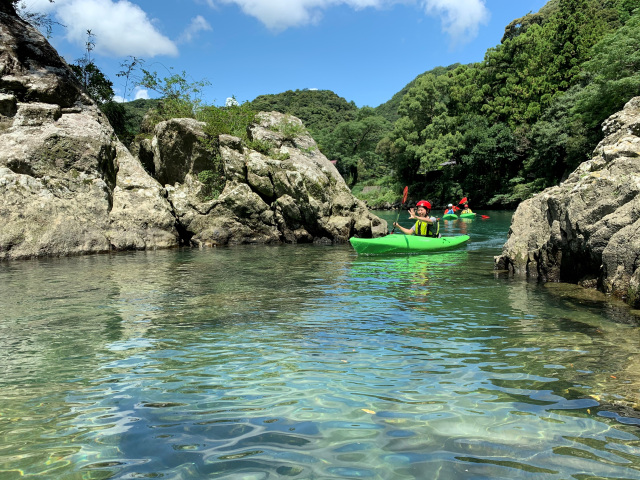
- Brew your own soy sauce
- In Yuasa, the birthplace of soy sauce, breweries continue to make soy sauce using traditional methods. Not only can you tour breweries, you can even try making your own. Once you see the soy sauce being fermented in large cedar barrels, you may find it tastes different. Many visitors are surprised by just how delicious the finished product is when they take home a bottle of soy sauce and develop it over a year in a PET bottle.
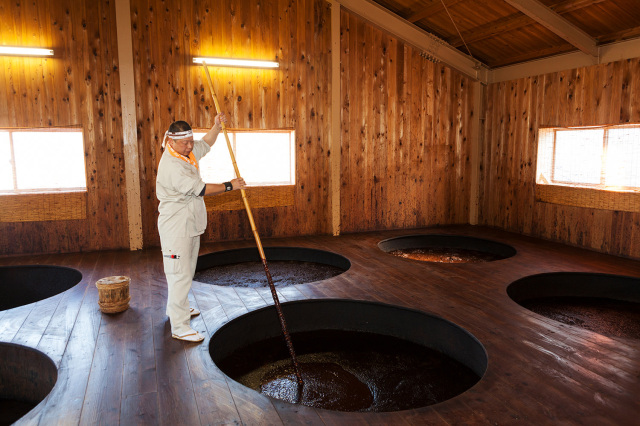
- View more
- Nanko-ume plum picking and processing
- All sorts of fruit are cultivated in Wakayama Prefecture, but one of the best-known is Nanko-ume plums, used to make premium umeboshi (pickled plums). The window for picking Nanko-ume plums - around June - is very short. You can try your hand at picking the fruit in an orchard where the sweet and sour aroma fills the air. Outside of picking season, there are plum processing workshops on offer such as umeboshi-making and juicing.
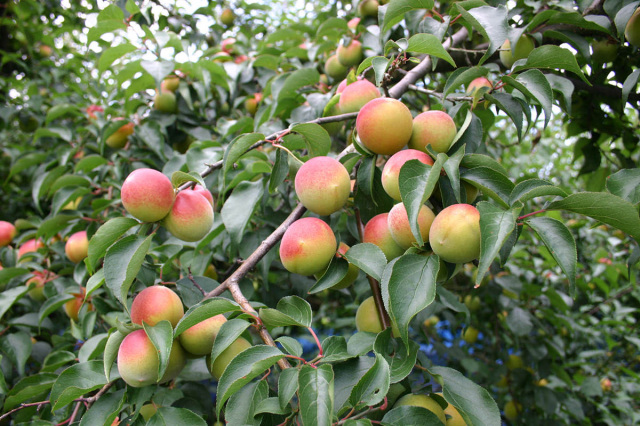
- Plum Kobou official website
- Beach seining
- You could try out beach netting, using nets actually used by local fisherfolk. Together with your team, pull up onto the beach a net that has been set by a fisherman. It is an unforgettable sight to see flashes of more and more fish as the net comes in. You could also try your hand at cleaning and fileting the catch or light up a barbecue. Netting is offered from May to October, though you are requested to sign up as a group of at least 10.
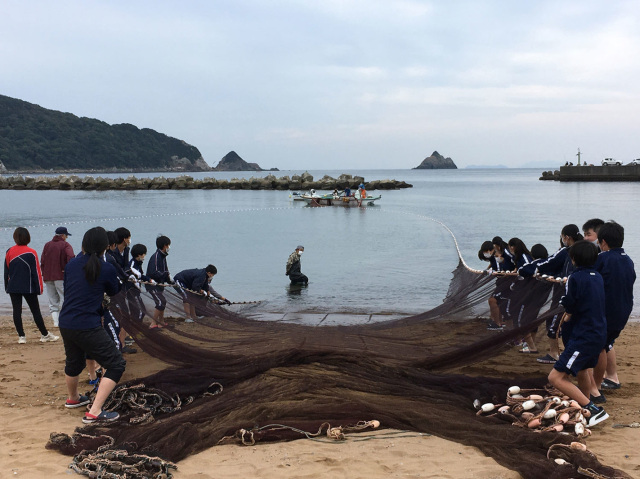
- View more
- River fishing (amago salmon, ayu sweetfish) and catching by hand
- The numerous rivers around Hidaka make this a recreational paradise. We have fishing ponds where beginners can have a go, and there are even spots on rivers where fish can be caught by hand. Adults and children alike can enjoy grilling and eating their own catch right by the river, perfect for creating lasting memories.
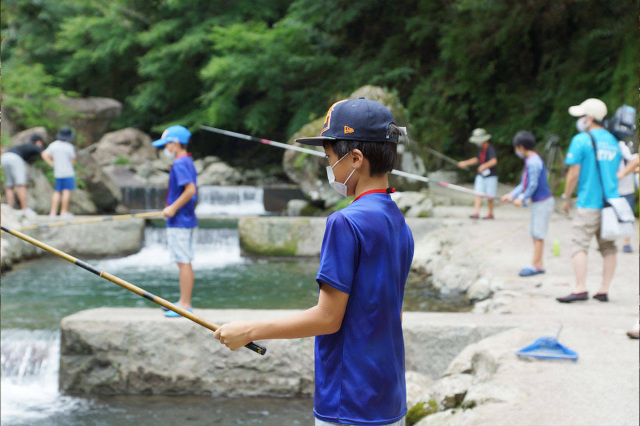
- View more
- Flower picking
- Gobo City is one of Japan’s top cut flower production areas. It is one of the top producers of sea lavender and gypsophila. From January through to around May, you can pick your own favorite colors from a sea of blooms in a flower garden in the town. During the same period, some local farms also offer strawberry picking.
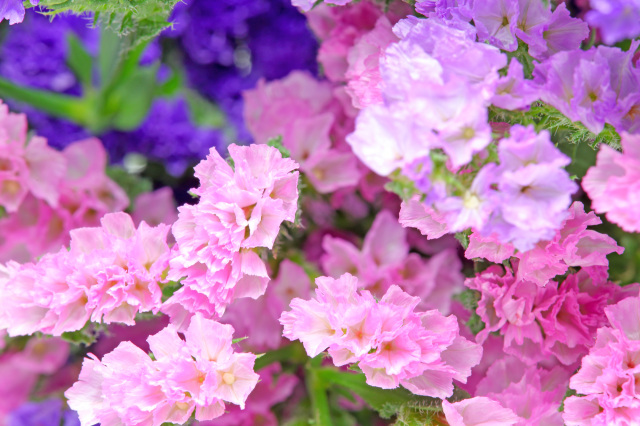
- Hidaka City Regional Tourism Promotion Council official website
- Camping
- As an area blessed with seaside, mountain and riverside campsites, a multitude of activities can be enjoyed while camping here. Camping areas at Shirasaki Ocean Park and Enju Beach offer spectacular views. Or why not try a one-of-a-kind camping experience on uninhabited Jino Island or other unique campsite?
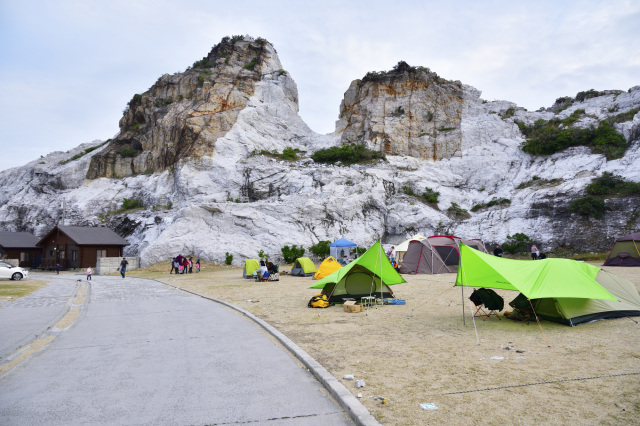
- Nesting sea turtle viewing
- Senri-no-hama Beach in Minabe Town is known as one of Japan’s top sea turtle nesting sites. On certain days from June, the general public can view the phenomenon between the hours of 8pm and midnight. Numbers are limited and rules are in place to avoid causing stress to the turtles. If you wish to view the turtles, a booking (permit application) must be made to Minabe Town by email or fax.
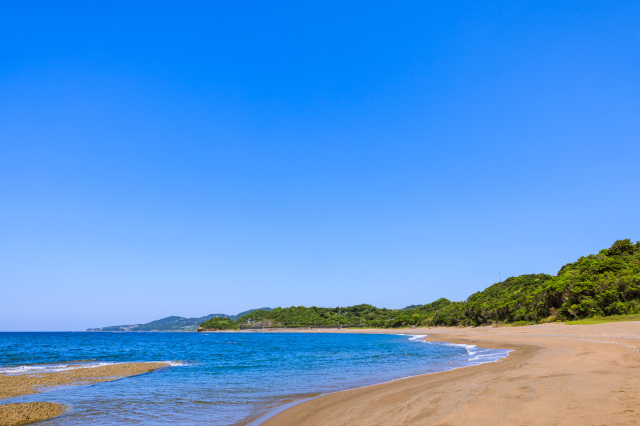
- Minabe Town official website
We recommend visiting places with over 1000 years of history
The history of the Arida-Hidaka area runs deep, its battles appearing in two books from around 600 years ago, Taiheiki (a medieval Japanese historical epic) and Genpei Seisuiki. Many prominent locations in the history of Japan remain, including shrines and temples. Places redolent of modern history include America-mura (“Wakayama Canadian Village”).
- Shishigase-toge Pass, Kiiji route, Kumano Kodo
- Considered the most treacherous point on the Kiiji route of the Kumano Kodo pilgrimage network, the Shishigase-toge Pass retains 503 m of cobblestone path, the longest on the Kumano Kodo network. Walk the ancient path for yourself and enjoy the beauty of the stones as you are enveloped in deep green. This was a key strategic point appearing several times in Taiheiki and Genpei Seisuiki, so you will also find the ruins of an old mountain fort here.
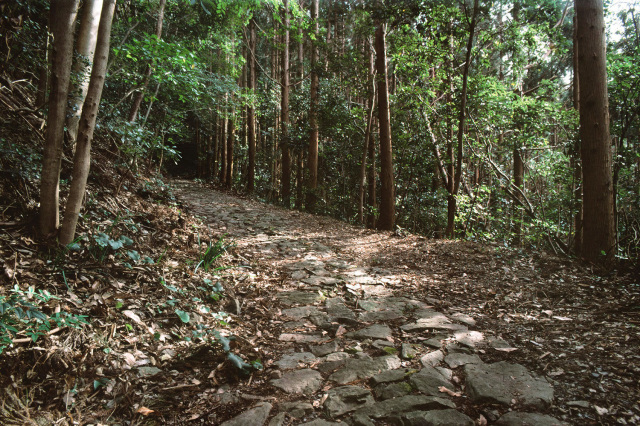
- Shishigase-toge Pass suggested itinerary
- Kokoku-ji Temple
- Kokoku-ji mixes history with legend. It was built in 1227 in memory of Minamoto no Sanetomo, an unfortunate shogun assassinated …
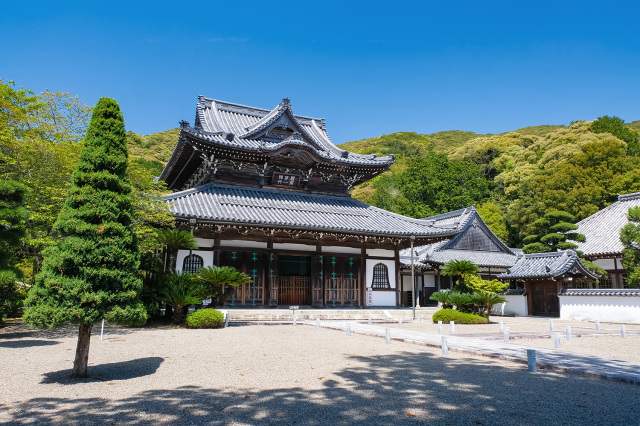
- View more
- Dojo-ji Temple
- Dojo-ji Temple is an ancient temple with many buildings and Buddhist sculptures which have been designated as National Treasures or important cultural properties. Dojo-ji Temple was the place where The Tale of Anchin and Princess Kiyo was passed down, which is a well-known play in Noh and Kabuki. Make sure to see a Buddhist sermon that uses explanations of picture scrolls.
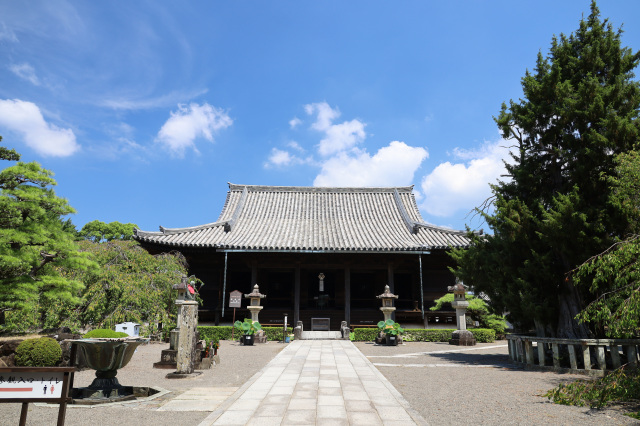
- View more
- Kirime-oji Shrine
- It is said there are more than 100 shrines for worship along the Kumano Kodo, known as the Ninety-Nine Oji. Of these, Kirime-oji Jinja is considered one of the Five Main Oji Shrines. Its name appears many times in historical documents, including Manyoshu, the oldest extant collection of Japanese waka (poetry), which was assembled in the late 7th century and early 8th century. In The Tale of Heiji, which details the Heiji Rebellion of 1159, this was the place where Taira no Kiyomori, who fought for power during this era, turned around and went back to Kyoto, the capital, after receiving news of Minamoto no Yoshitomo's uprising. The giant woodland elaeocarpus tree, a Prefectural Natural Monument that is over 300 years old, is another fine sight to see.
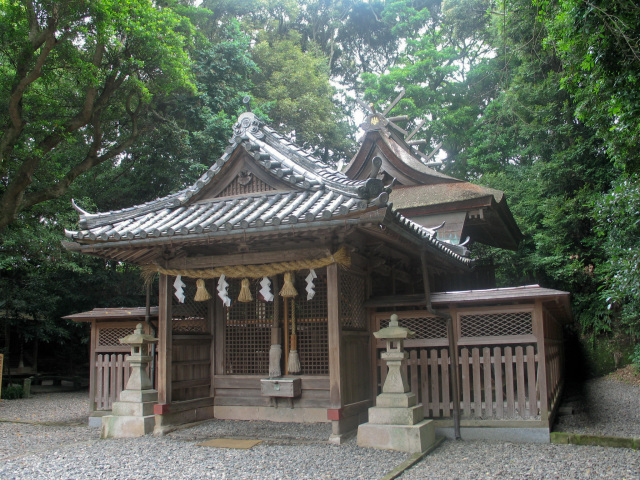
- Wakayamaken-Jinjacho official website
- America-mura (Wakayama Canadian Village)
- The coastal village of Mio, in Mihama Town, was the source of many emigrants to Canada in the late 19th and early 20th century. The Western lifestyle and housing style these migrants brought back on their return remain to this day, such that the village has come to be called “America-mura” – with the meaning of “America” as a continent. Take a stroll around the town as you take in the beautiful esplanade, fancy restaurants, the Canada Museum and the 300-year-old Japanese sea fig, a massive subtropical specimen overhanging Ryuo Shrine.
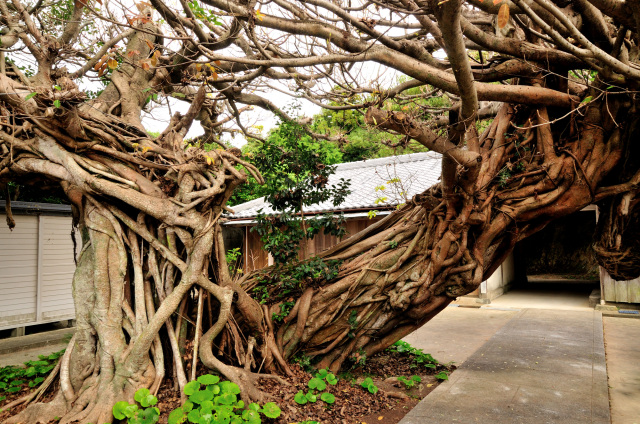
- View more
We have onsen! Relax and refresh in our onsen on a day trip or overnight tour
After seeing the sights, take a break in a Onsen. Minabe Onsen, Hidaka Onsen and Aridagawa Onsen are among the many options. Stay the night to enjoy your spa to the max, or there are plenty of day-use facilities. Yuasa Onsen Yuasa Castle has a fine reputation, offering the opportunity to live like a king of the castle.
- Onsenkan Uminosato Michishio-no-yu
- Located at Katakui Beach, here you can gaze out over the bay and fishing village from Onsen. This is a great hot spring to relax at with family, equipped with a cafeteria and a community room. At the restaurant, the menu is full of dishes giving you a taste of Hidaka’s seasonal fish and farm produce.
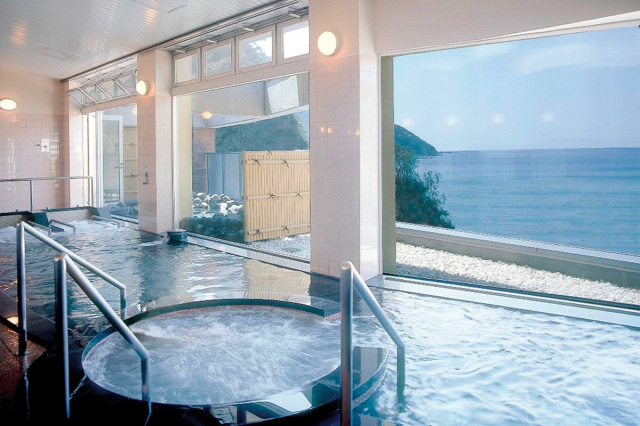
- View more
- Tsurunoyu Onsen
- This hot spring hotel in a natural setting has been a healing spa suited to long stays since the Edo period over 160 years ago. Its waters bubble up a muddy brown color due to its rich iron content. Legend has it that a crane rested here and healed its wounds, giving these waters a reputation for healing cuts and relieving fatigue. The mountain location means you can soak in the onsen surrounded by forest and a burbling river.
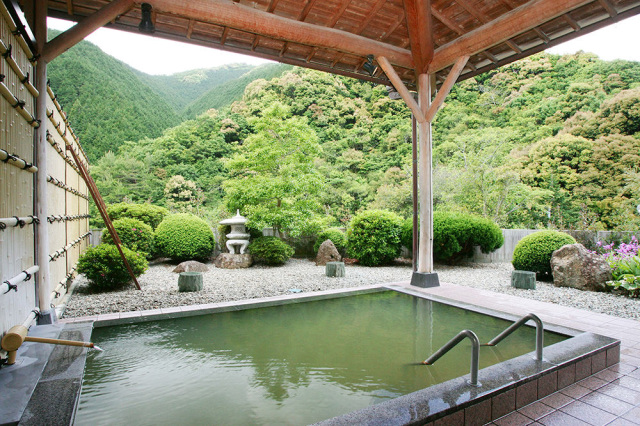
- Tsurunoyu Onsen
- Kishu’s stealth onsen – Ninomaru Onsen
- This hot spring facility was refurbished in 2019. As an alkaline hot spring in the mountains, enjoy the sound of the rushing river as you soak in the open-air and cypress timber-lined Onsen. You can also glory in the privacy of your own steamroom by renting a Finnish sauna cabin. If in need of sustenance, drop by the Strike-ken restaurant, which has been voted No. 1 in the Ramen Grand Prix. Cottages are also available for rent.
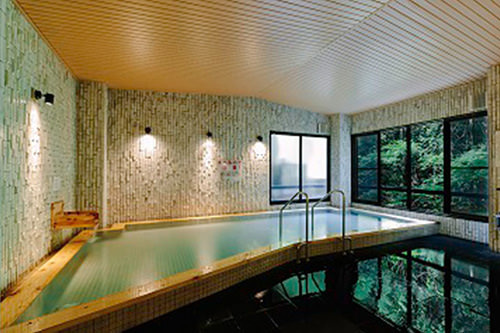
- Kishu’s stealth onsen – Ninomaru Onsen
- Onsen Hotel Minabe
- With an idyllic clifftop location, the ocean views from this hotel are breathtaking. All rooms are traditional tatami mat rooms and bedding is Japanese style: futons not beds. An added treat is the onsite hot spring bathing.
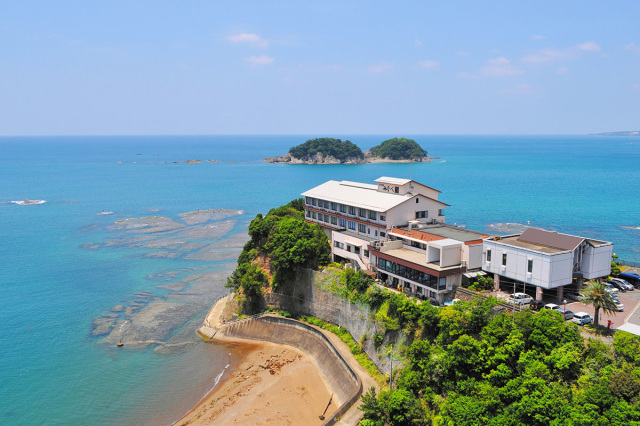
- View more
- Yuasa Onsen Yuasajyo
- One of the most unique hotels in the area, rooms are set around an inner courtyard housing a replica of the castle that once stood in Yuasa.
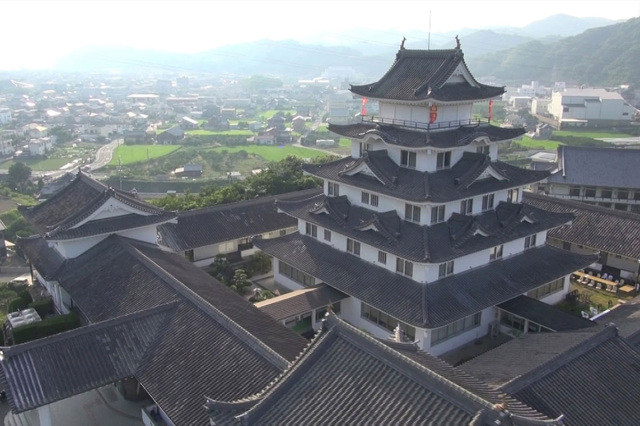
- View more
- Kanaya Myoekyo Onsen
- This quaint onsen is suffused with the scent of wood in the air, thanks to the extensive use of Kishu timber. The popular choices here are the steamy open-air Onsen with a full view of the Arida River, which flows through plunging mountains, and ganban-yoku (lying on heated natural stones). The restaurant offers a seasonal menu with the focus on local ingredients.
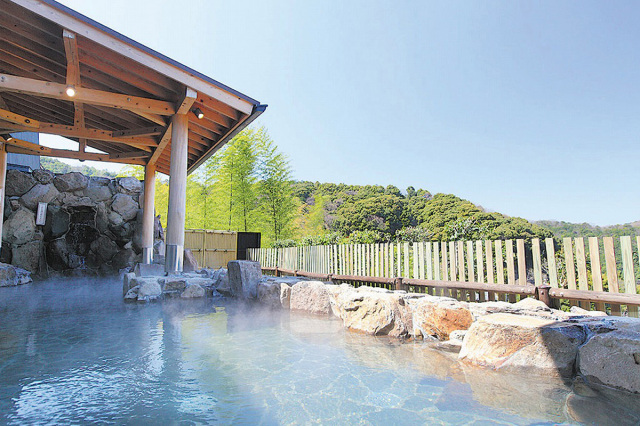
- View more
- Aridagawa Onsen Hikarino Yu
- This sodium chloride spring has a pH of 8.7, its pleasant waters reputed to leave the skin shiny and smooth after bathing. Take a leisurely open-air bath where you can enjoy nature to the fullest, or chill out in a more tepid tsubo-yu (urn). Uncommon saunas are also found here, including a binchotan charcoal sauna with walls stocked with about 150kg of the charcoal, and a mist sauna featuring ultra-high temperature steam from the hot spring source. As you enjoy a meal in the restaurant, feel your daily fatigue melt away.
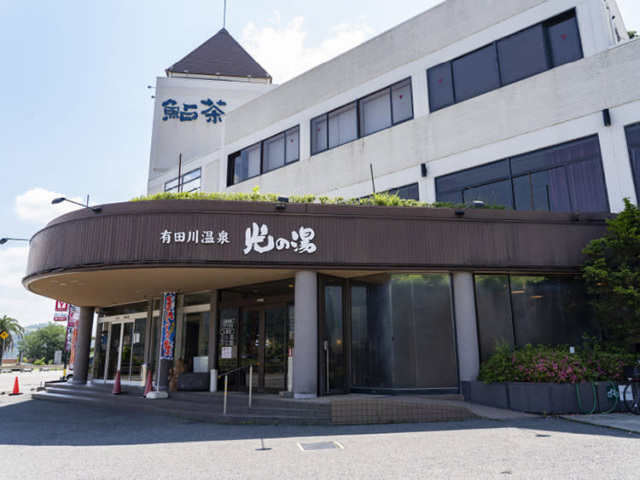
- Aridagawa Onsen Hikarino Yu
- Takihara Onsen Hotarunoyu
- This is a hot spring facility surrounded by nature near Hirokawa Dam, a famous cherry blossom-viewing spot, and also has a sauna and cold bath. There are gardens and ponds in the surrounding area, so you can enjoy cherry blossoms, fireflies and autumn leaves depending on the season. In addition to set meals and kaiseki cuisine featuring local ingredients, in winter you can enjoy seasonal dishes such as botan nabe (wild boar hotpot).
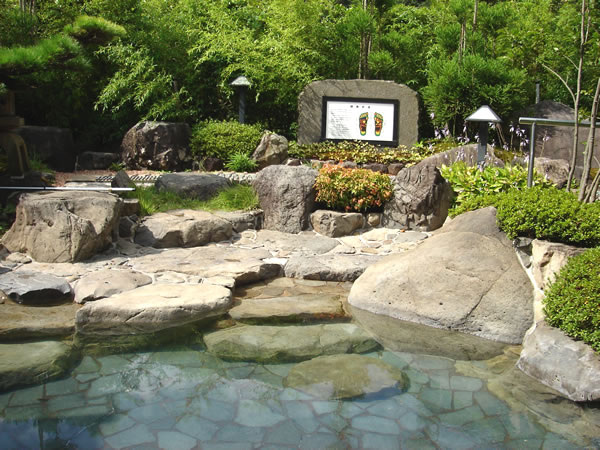
- Takihara Onsen Hotarunoyu
What is the most famous food?
The most famous would be Arida mandarin oranges, which make up 10% of total production of mandarin oranges in Japan, and Hidaka kue (longtooth grouper), the sought-after fish used in kue nabe (longtooth grouper hotpot). Moreover, Yuasa district is said to be the birthplace of soy sauce culture.
Arida mandarin oranges
Arida district is said to have the top mandarin orange production in Japan. The unshu mikan oranges produced in Arida are known as “Arida mikan”. They are distinguished by their sweetness, which is attained through careful technical methods such as conducting fruit quality analysis before picking. The harvest begins around the start of October, and they can be enjoyed until about February the following year. Why not try the famous “Arida peeling”? This is the approach of breaking an orange into quarters before peeling it.
Hidaka kue
Longtooth grouper landed at Hidaka, Wakayama Prefecture are called “Hidaka kue”. Also known in Japan as ara and moroko, this is a big fish that can grow to more than a meter long. Its flesh is rich in fat yet has fine flavor with depth. Peak season is reported to be October to December, so it is a classic ingredient of a winter hotpot. “Wild-caught kue hotpot” from Hidaka triumphed at the Japanese National Nabe Grand Prix competition in 2018.
Yuasa soy sauce and whitebait on rice
While Yuasa is the likely origin of soy sauce in Japan, according to lore soy sauce started out as a byproduct of Kinzanji miso, which is eaten not as a condiment but as a rice topping. Whitebait are landed year-round at Yuasa port, but it is the whitebait caught between April and June, called “spring whitebait”, that is the best with its tender flesh and high fat content. Many restaurants in the town serve shirasu-don (whitebait on rice), so you will be able to try fresh whitebait with traditional Yuasa soy sauce.
See suggested itineraries
Here we present several suggested itineraries to make the most of the Arida-Hidaka area’s history, sightseeing and famous delicacies.
Accessing and traveling through the area
◆By rail
Traveling by limited express train Kuroshio on the JR Kisei Line, you can take the train here from Osaka or the southern Kii Peninsula (Shirahama/Tanabe). Once you arrive, cycling is recommended for sightseeing around the district. Rental cycles are available at roadside stations and tourist information centers.
◆By road
The Hanwa Expressway passes through as the north-south route for easy access from both Osaka and southern Kii Peninsula.
Driving is recommended if you intend to tour a range of sights or districts.
Map for the list of destinations
- Aragi-jima Island Rice Terraces
- Yuasa historic townscape
- Shirasaki Coast
- Cape Hinomisaki and Hinomisaki Lighthouse
- Kaeru (Frog) Bridge
- Kishu Railway
- Yahoo Point
- Totsui Limestone Cave
- Jinai-machi
- Zao Bridge
- Poppo-michi Road
- Nishihiro Coast
- Kenkoku Shrine Autumn Festival
- Kibun Festival
- Gyogyotto Fish Festival
- Hirohachimangu Shrine Festival (autumn)
- The Inamura Fire Festival
- Nyu Shrine Laughter Festival
- Minabe-bairin Ume Orchard Grove
- Fujidana (Wisteria Trellis) Road
- Brew your own soy sauce
- Nanko-ume plum picking and processing
- Beach seining
- River fishing (amago salmon, ayu sweetfish) and catching by hand
- Flower picking
- Nesting sea turtle viewing
- Shishigase-toge Pass, Kiiji route, Kumano Kodo
- Kokoku-ji Temple
- Dojo-ji Temple
- Kirime-oji Shrine
- America-mura (Wakayama Canadian Village)
- Onsenkan Uminosato Michishio-no-yu
- Tsurunoyu Onsen
- Kishu’s stealth onsen – Ninomaru Onsen
- Onsen Hotel Minabe
- Yuasa Onsen Yuasajyo
- Kanaya Myoekyo Onsen
- Aridagawa Onsen Hikarino Yu
- Takihara Onsen Hotarunoyu
*GoogleMap is posted using the free tier, which has a limited number of display times. Please note that depending on the situation, there may be periods when you cannot view the site.
